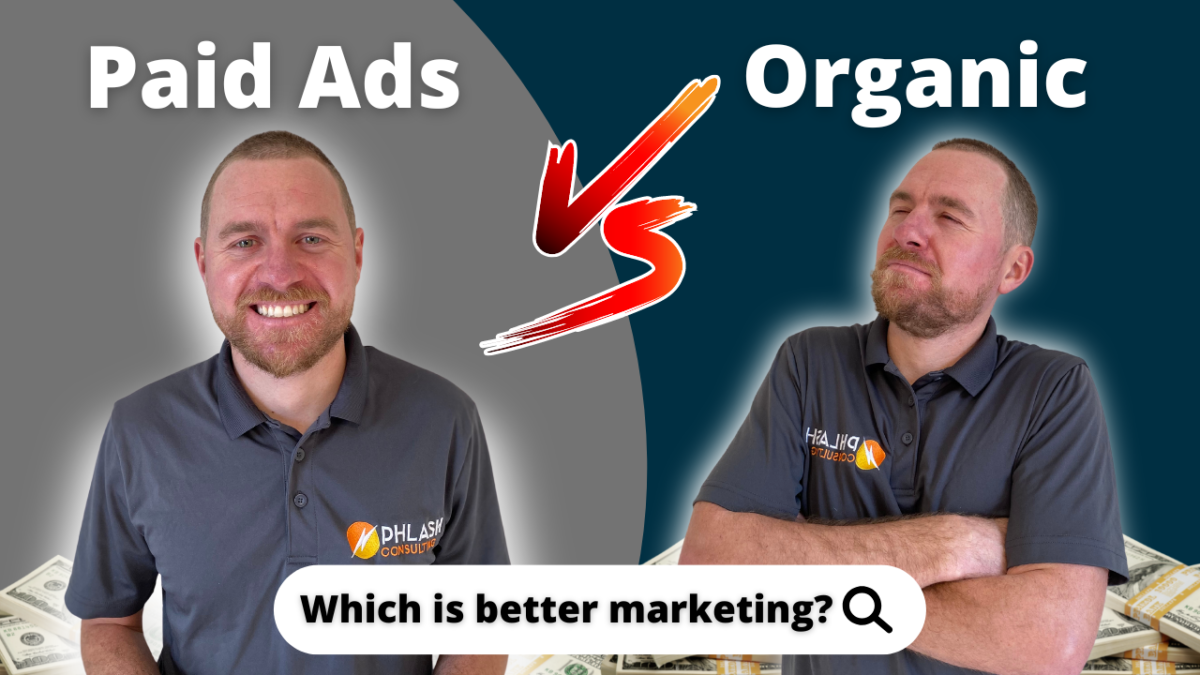Maximizing Your Local Marketing ROI: Comparing Organic vs. Paid Lead Generation Techniques
In today’s digital age, businesses are faced with the challenge of different marketing strategies for paid and organic marketing efforts to attract and retain customers. While both methods have their own advantages and disadvantages, the ultimate goal is to achieve the highest return on investment (ROI). In this article, we will discuss the key differences between paid and organic marketing, their benefits and drawbacks, and provide recommendations on which strategy is more suitable for your business.
What is Paid Marketing?
Paid marketing, also known as paid advertising, refers to the use of paid channels to promote a product or service. This can include pay-per-click (PPC) advertising, pay-per-lead (PPL) advertising, social media advertising, display advertising, and more. Paid advertising allows businesses to reach a wider audience, increase brand visibility, and drive traffic to their website. However, it can require a significant investment, and the results are often short-term because you have to maintain and even increase ad spend to attract leads.
Benefits of Paid Marketing:
- Immediate results: Paid advertising can generate immediate leads and traffic to your website, resulting in increased sales.
- Targeted audience: With paid advertising, you can target specific demographics, interests, and behaviors to reach your ideal customer.
- Measurable results: Paid advertising provides detailed metrics on the performance of your campaigns, allowing you to make data-driven decisions.
Drawbacks of Paid Marketing:
- High costs: Paid advertising requires a significant investment, which can be a challenge for small businesses or those with limited budgets.
- Short-term results: Paid advertising only generates traffic as long as the campaign is active. Once the budget is exhausted, the traffic also stops.
- Ad blindness: Consumers are becoming increasingly immune to traditional advertising, leading to ad blindness and lower click-through rates.
What is Organic Marketing?
Organic marketing, also known as inbound marketing, refers to the use of non-paid channels to attract and retain customers. This can include search engine optimization (SEO), content marketing, social media marketing, retargeting past customers, and building a brand in the marketplace. Organic marketing aims to build long-term relationships through brand and reputation with customers by providing valuable and relevant content that addresses their needs and interests.
Benefits of Organic Marketing:
- Long-term results: Organic marketing efforts can provide long-term benefits, as the content remains visible and relevant over time.
- Cost-effective: Organic marketing requires little to no financial investment, making it a more accessible option for small businesses.
- Builds trust: By providing valuable and relevant content, organic marketing can build trust and credibility with your target audience.
Drawbacks of Organic Marketing:
- Requires time and effort: Organic marketing requires a significant investment of time and effort to create high-quality content and achieve high search engine rankings.
- Results may be slow: It can take time to see the results of organic marketing efforts, which may not be suitable for businesses that require immediate results.
- Difficulty in measuring ROI: Organic marketing is not as measurable as paid advertising, making it more challenging to calculate ROI.
Paid Ads vs. Organic Marketing – Which Strategy Provides the Highest ROI?
The choice between paid and organic marketing ultimately depends on your business goals, budget, and target audience. While paid advertising can provide immediate results and targeted traffic, organic marketing can build trust and credibility with your target audience, resulting in long-term benefits.
To determine which strategy is more suitable for your business, consider the following:
Budget: If you have a limited budget, organic marketing may be a more accessible option.
Business goals: If you require immediate results, paid advertising may be a better choice. If you are looking to build a long-term brand and relationships with customers, organic marketing would be the choice.
Target audience: If your target audience is active on social media or other paid channels, paid advertising may be more effective in reaching them. If your audience prefers organic search results such as reading google reviews and testimonials, organic marketing may be better.
A Wholistic Marketing Plan Solution
Here is the framework we recommend when it comes to paid ads and organic marketing. Building a brand online with a solid foundation, a professional website, search engine optimization, positive reviews, and good-quality content is like building a strong foundation for a business. This strategy is more focused on the organic side of marketing but can take 6-12 months to start to see traction.
We typically recommend layering in ads which is like gas on a fire once you have a solid business foundation. Paid ads can easily scale with a business, but many times companies skip the foundation step which forces them to jump from ad platform to ad platform.
The other part of this equation
Most companies forget about (LTV) the lifetime value of a customer and retargeting past customers and prospects. While bringing in new business is important because it gets the engine going, there is a gold mine in your database, and having a complete marketing plan with retargeting is a great way to capitalize on your paid and organic efforts upfront.
Home Services Marketing Consultant
Unsure where to start with your marketing plan? Which is better for you currently, paid ads or organic marketing? At Phlash Consulting, we work with local service businesses to help them increase their sales and keep their schedules full. Set up a free 30-minute strategy meeting to discuss your business goals.

